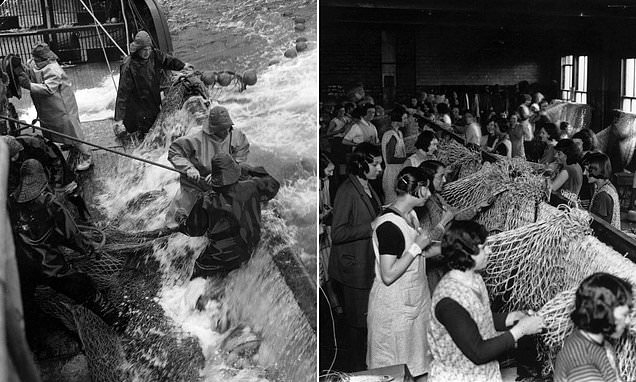As the fishing industry continues to shrink in once-thriving coastal towns, institutions like the Grimsby Fishing Heritage Centre are beginning to reflect more deeply on what stories they’re telling—and what may have been left out.
In an effort to modernise its approach, the museum is now turning its attention to how colonialism, slavery, and racism might intersect with its exhibits on North Sea fishermen.
Rethinking the Narrative Around Trawlermen
The Grimsby Fishing Heritage Centre, which pays tribute to the town’s rich maritime legacy, is embarking on a review of its collection.
Staff are closely examining items that celebrate the lives and work of local trawlermen to see if there are any overlooked connections to colonial-era practices or discriminatory narratives.
Rather than just focusing on fishing as a standalone trade, the centre wants to broaden its scope to include the cultural and historical frameworks surrounding the industry—including the roles of empire, exploitation, and underrepresented communities.
What “Decolonising” Means for the Museum
The concept of decolonisation in museums generally means stepping away from a Eurocentric perspective and trying to include voices and experiences that have traditionally been marginalised.
For the Grimsby museum, that means reviewing not just the physical artefacts, but also the language, labels, and interpretations used in the exhibits.
The review is still in its early stages, but the goal is clear: to ensure that the museum tells a more inclusive, accurate story—one that doesn’t gloss over uncomfortable truths or ignore the contributions and experiences of people from diverse backgrounds.
A Closer Look at What’s on Display
Inside the centre, visitors encounter realistic dioramas—a mock-up of a fishing vessel, a dry-dock, and scenes of daily life like women repairing fishing nets.
But now, curators are asking whether any of these displays unintentionally reinforce outdated or exclusive narratives.
Are there unacknowledged links to slavery in the supply chains or funding behind the fishing fleets?
Do the stories leave out communities of colour or immigrants who played roles in the town’s development?
The museum says it’s committed to engaging with these questions through “open and honest conversations” with the public and the communities it represents.
Who’s Behind the Project?
The museum is operated by North East Lincolnshire Council, which is currently Conservative-run.
According to a council spokesperson, a formal review is underway to identify any “problematic objects, interpretation, or terminology,” particularly those that may exclude or misrepresent people from protected characteristic groups.
They’ve made it clear that this initiative isn’t about erasing history but about enriching it—providing more context and including voices that have historically been left out.
Why It Matters Now More Than Ever
Grimsby’s fishing history isn’t just a tale of ships and seas—it’s about people, politics, and power.
At its peak, the town was home to the busiest fishing port in the world, with around 700 trawlers operating at once.
But things began to unravel after the Icelandic Cod Wars in the 1970s and the implementation of the EU’s Common Fisheries Policy, both of which severely impacted the industry.
Today, just a handful of fishing vessels remain.
As of late 2022, there were only four trawlers working out of Grimsby, far fewer than the number of boats servicing offshore wind farms in the nearby Humber Estuary.
The Human Cost of Industry Decline
The downturn hit the town hard. Tens of thousands of men lost their jobs when their boats were decommissioned.
That economic blow is still felt today, especially among older generations who remember Grimsby’s glory days on the sea.
Some locals have been critical of political efforts to revive the industry, with figures like Labour leader Sir Keir Starmer facing backlash for recent EU negotiations.
For many, these deals feel like the final nail in the coffin of a once-thriving trade.
So What Happens Next?
For now, the museum’s review continues.
It’s too early to say exactly what changes will be made—or even whether any concrete links to colonialism or slavery will be uncovered.
But what’s certain is that the museum wants to evolve with the times, inviting broader participation in how history is remembered and represented.
The conversation around heritage, identity, and inclusion is far from over—and places like Grimsby, with their deep historical roots, are right at the heart of it.
